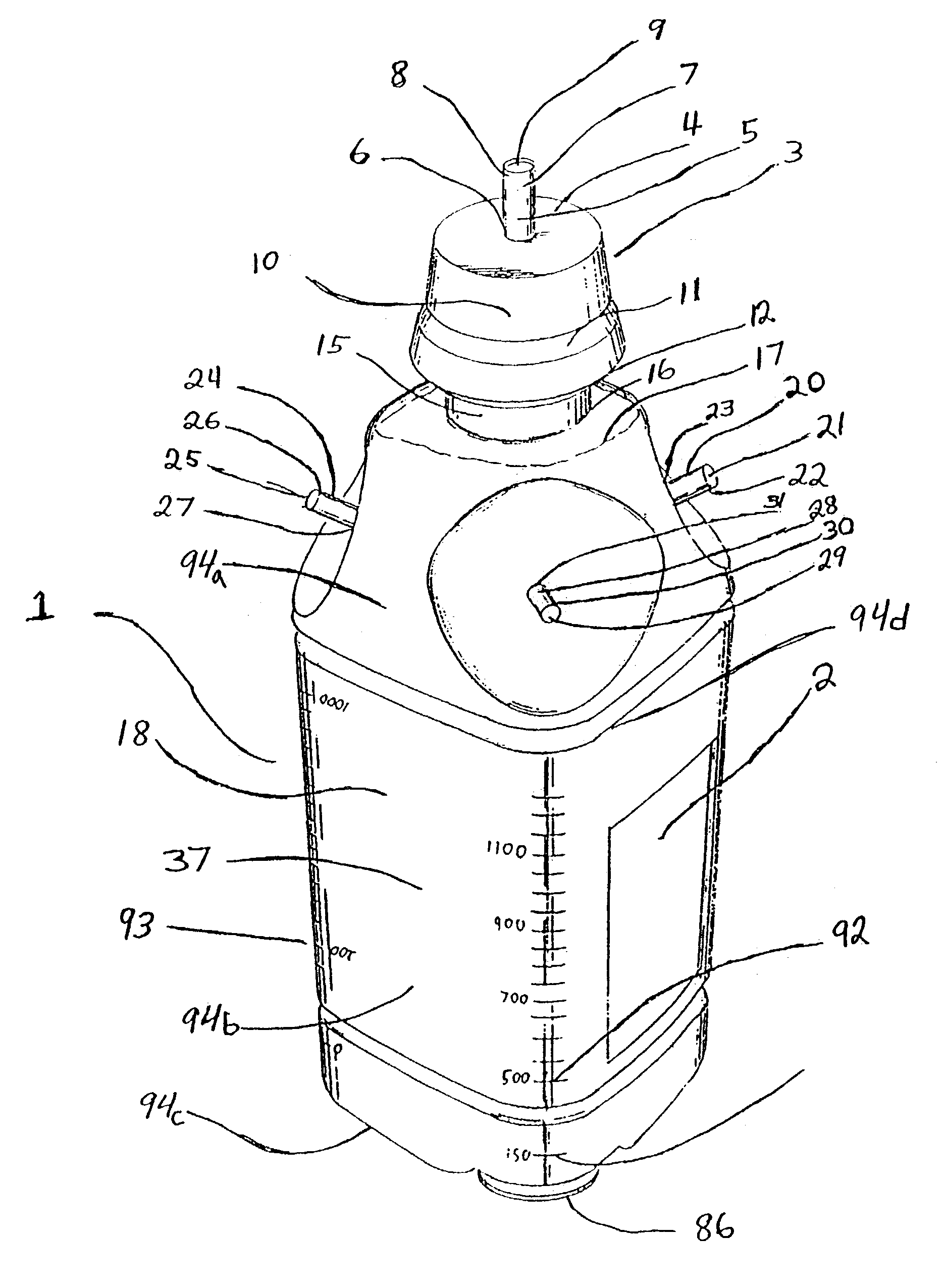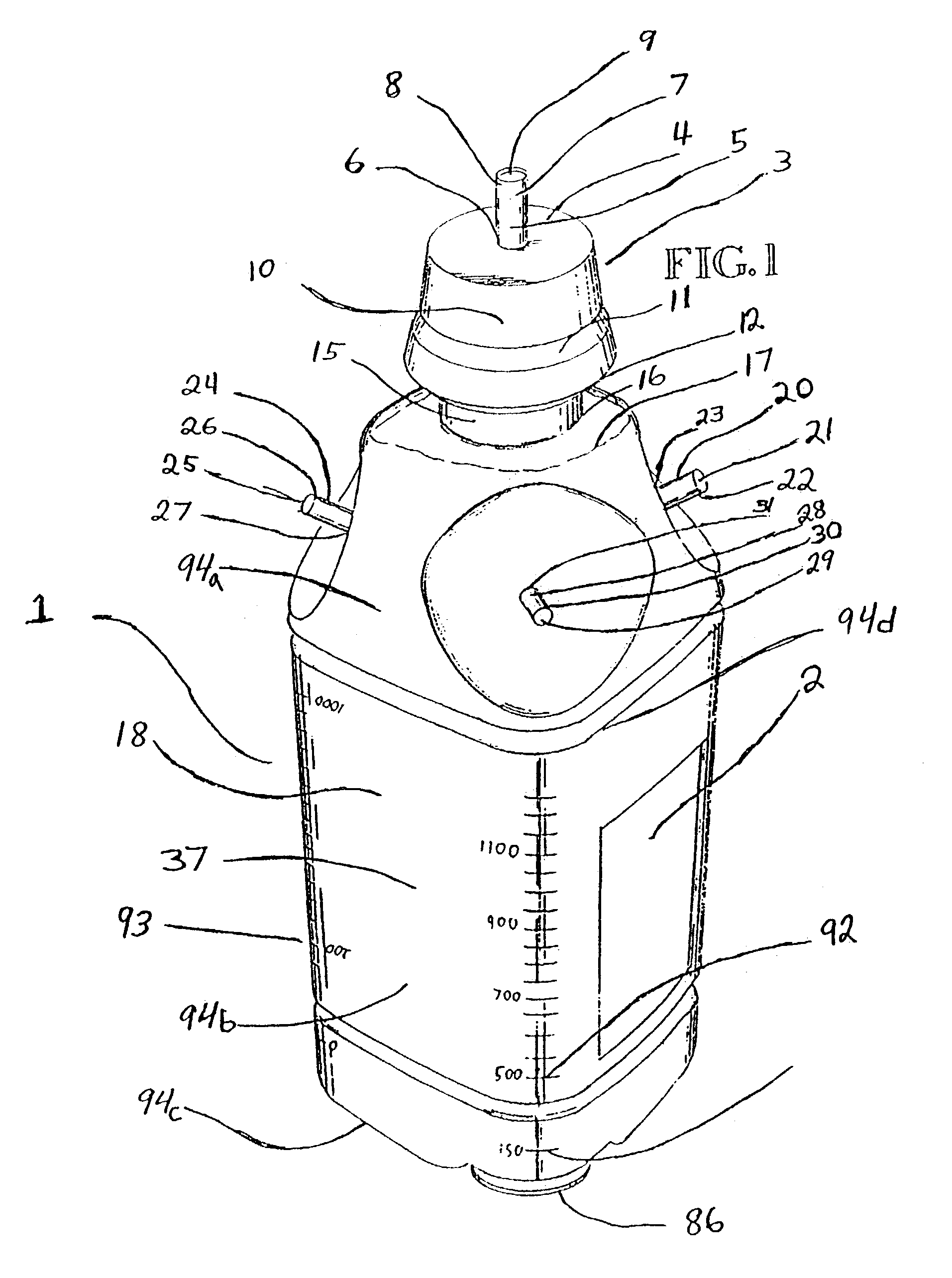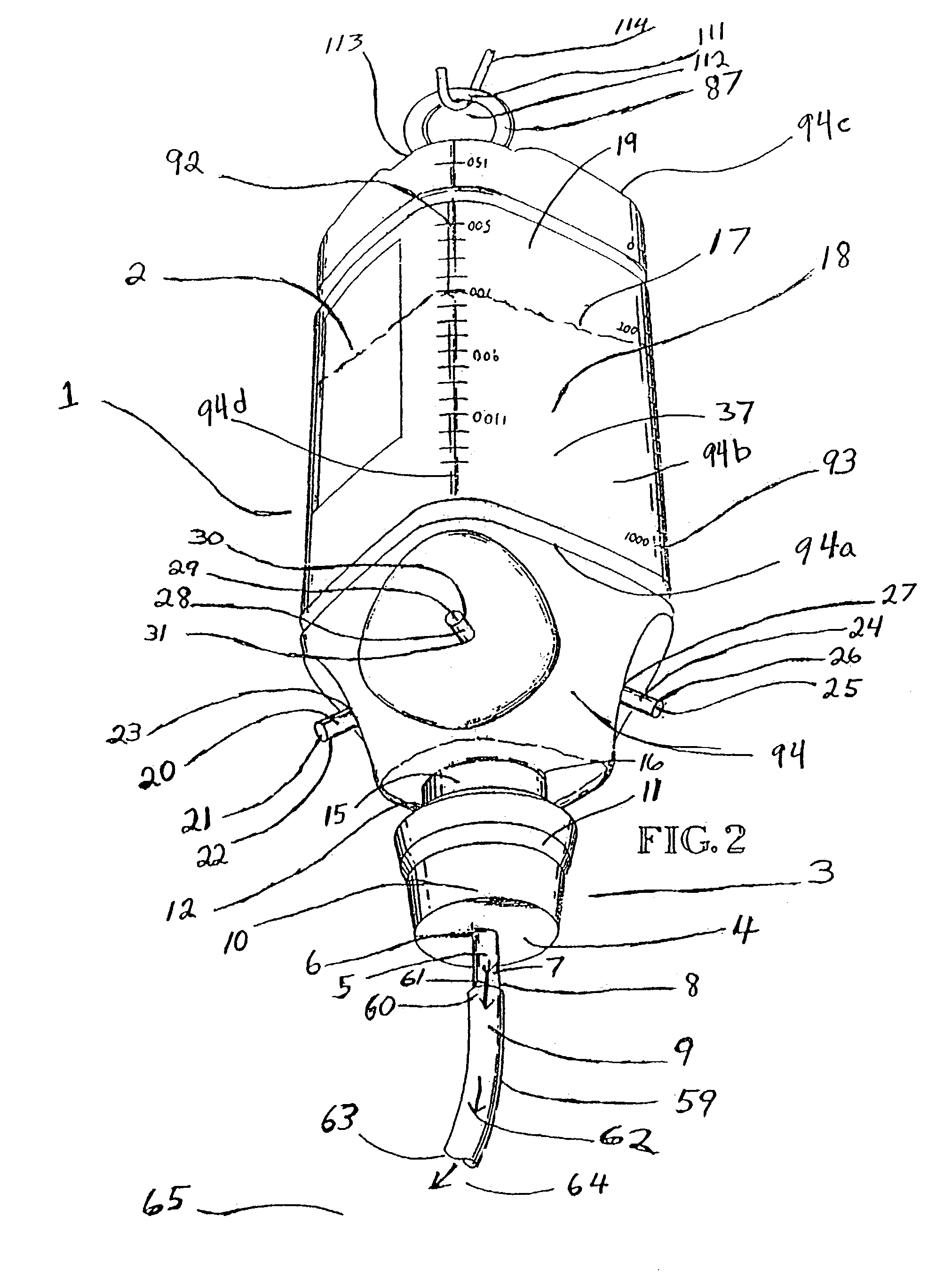Material(s)/content(s) management method and apparatus
a management method and material technology, applied in the field of fluent materials, can solve the problems of no teaching or instruction for use, no structural cooperative coaptation, no structural coaptation, etc., and achieve the effects of reducing medical waste, reducing activity based costs, and reducing health care costs
- Summary
- Abstract
- Description
- Claims
- Application Information
AI Technical Summary
Benefits of technology
Problems solved by technology
Method used
Image
Examples
Embodiment Construction
[0069]The method and apparatus for material(s) / content(s) management is disclosed in accordance with the present invention referring to the various enclosure / barrier structure embodiments described herein each having / providing methods and / or apparatus for volumetric displacement and volumetric replacement of dissimilar materials and volumetric displacement and volumetric replacement of materials of dissimilar origin. As shown in reference to FIGS. 1–7 cubic volumetric displacement and / or replacement of dissimilar materials of dissimilar origin are impelled / expelled and / or ingressed and egressed or egressed and ingressed in accordance with dynamic gradient systems associated with enclosure / barrier structure 1. Volumetric displacement and volumetric replacement of dissimilar materials and volumetric displacement and volumetric replacement of materials of dissimilar origin, occurs to and from and from and to an instance of use by ingress and egress and egress and ingress in association...
PUM
| Property | Measurement | Unit |
|---|---|---|
| Force | aaaaa | aaaaa |
| Flow rate | aaaaa | aaaaa |
| Size | aaaaa | aaaaa |
Abstract
Description
Claims
Application Information
 Login to View More
Login to View More - R&D
- Intellectual Property
- Life Sciences
- Materials
- Tech Scout
- Unparalleled Data Quality
- Higher Quality Content
- 60% Fewer Hallucinations
Browse by: Latest US Patents, China's latest patents, Technical Efficacy Thesaurus, Application Domain, Technology Topic, Popular Technical Reports.
© 2025 PatSnap. All rights reserved.Legal|Privacy policy|Modern Slavery Act Transparency Statement|Sitemap|About US| Contact US: help@patsnap.com



